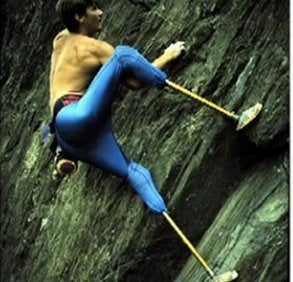
"Welcome to the bionic age," announced Hugh Herr at TEDMED 2010, in his powerful talk on how technological innovation and scientific discovery can rid the world of disability.
And Herr is should know. After a tragic mountain climbing accident in his youth, Herr lost both legs. A blizzard struck as he and a climbing buddy were ascending Mt. Washington, and they were trapped for nearly four days. Severe frostbite caused both legs to be amputated.
He dreamed of climbing again, but thought, how would that be possible?
"The answer of course, was technology," said Herr.
From this personal experience came a career in the study of bionics, which he described as the place where science meets design.
I had to view my own body in a distinct way from how society was viewing my body. I no longer viewed by biological body as broken. I viewed those things as broken. I viewed technology as broken. I reasoned that there's no such thing as a disabled person there's only disabled technologies. There's only poor design.
Herr, an MIT professor and director of the Biomechatronics group at the university, said he viewed his artificial limbs as a "blank palate on which to create," and envisioned a further where technology can rid the world of disability.
He used the example of eyeglasses. Before the advent of eyeglasses, people with poor eyesight were considered disabled. Now they simply have a condition: poor eyes. Same goes for him, he said. "You cannot with a straight face label me as disabled."
The bionic limbs are made to imitate human limbs. They move as if made of muscles and tendons, flesh and bone. Each has 5 computers and 12 sensors at work. And because everybody walks a little differently, there is a mobile phone app that can program the stiffness and power of the limbs.
In a decade or so the bionic limb will be linked to the nerve endings, explained Herr, which will make it not only possible for him to across a sandy beach, but feel the sand as well.
"In this age of bionics our machines will no longer be separate lifeless mechanisms, he said. "But instead, intimate, organic extensions of our body. A collaborate, seamless dance between flesh and machine."
WATCH: